UT Sediment Transport and Earth-surface Processes (STEP) Basin
Morphodynamics Laboratory, J.J. Pickle Research Campus
The Third in the World at UT
The unique subsidence mechanism in the STEP basin allows for investigating deltaic sedimentation under conditions of 1) fore-hinge (passive margin), 2) back-hinge (foreland basin), and 3) lateral tilting subsidence patterns. This facility will be one of only three experimental tanks in the world that provides a computer-controlled basement motion.

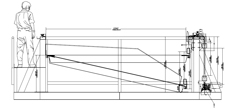
Sediment, Water, and Deposition
The UT STEP basin has a size of 4 m wide, 5 m long, and 1.5 m tall. This experimental flume is designed to physically model morphodynamic and stratigraphic evolution of the fluviodeltaic system. Both 1D and 3D delta experiments can be conducted in the basin.
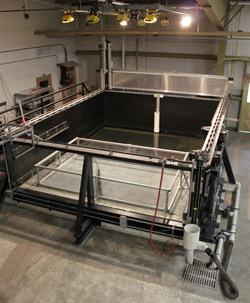
Triple the Controls, Triple the Fun(+damental understanding)!
Time variations of sediment supply and sea level can be simulated during experiments along with the subsidence control. These three basinal controls are independently set by a computer and precisely monitored in the facility.
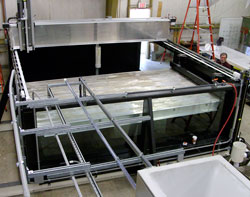
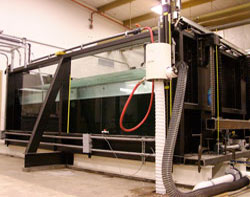
Completed, March 2011
Bio-Geo Flume
Collaboration with Prof. Bruce Fouke at University of Illinois, Urbana-Champaign
Yellowstone at Your Lab.
Cascading steps developed using artificial spring water at the Laboratory! Series of test flume experiments for Carbonate sedimentation have been performed in a proto-type Bio-Geo flume facility at UIUC. Biological, chemical, and geological controls on the surface morphology and carbonate stratigraphy will be examined in both this and a new system that will be assembled at the Morphodynamics Lab, UT. Movie: Carbonate Precipitation
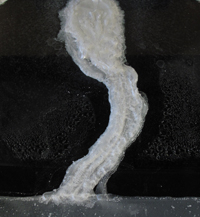
Come back for more exciting experimental outcomes from the STEP basin and Bio-Geo flume!

